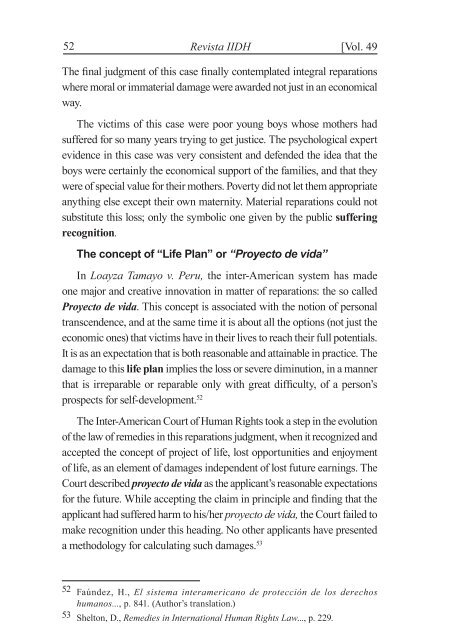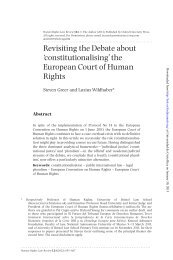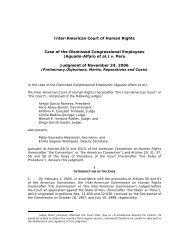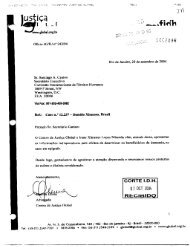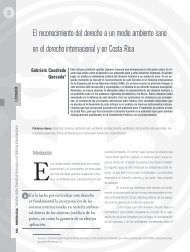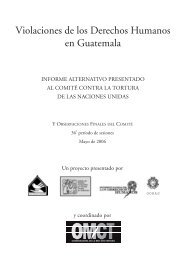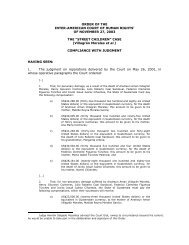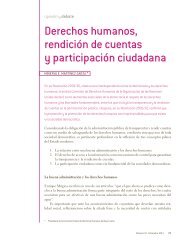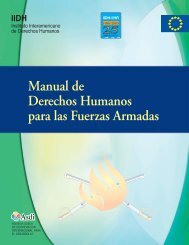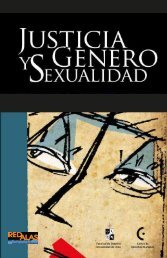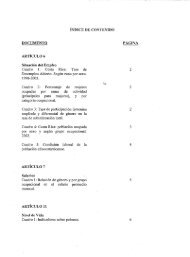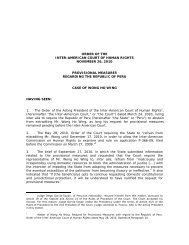Inter-American Court of Human Rights' reparation judgments ...
Inter-American Court of Human Rights' reparation judgments ...
Inter-American Court of Human Rights' reparation judgments ...
- No tags were found...
You also want an ePaper? Increase the reach of your titles
YUMPU automatically turns print PDFs into web optimized ePapers that Google loves.
52 Revista IIDH[Vol. 49The final judgment <strong>of</strong> this case finally contemplated integral <strong>reparation</strong>swhere moral or immaterial damage were awarded not just in an economicalway.The victims <strong>of</strong> this case were poor young boys whose mothers hadsuffered for so many years trying to get justice. The psychological expertevidence in this case was very consistent and defended the idea that theboys were certainly the economical support <strong>of</strong> the families, and that theywere <strong>of</strong> special value for their mothers. Poverty did not let them appropriateanything else except their own maternity. Material <strong>reparation</strong>s could notsubstitute this loss; only the symbolic one given by the public sufferingrecognition.The concept <strong>of</strong> “Life Plan” or “Proyecto de vida”In Loayza Tamayo v. Peru, the inter-<strong>American</strong> system has madeone major and creative innovation in matter <strong>of</strong> <strong>reparation</strong>s: the so calledProyecto de vida. This concept is associated with the notion <strong>of</strong> personaltranscendence, and at the same time it is about all the options (not just theeconomic ones) that victims have in their lives to reach their full potentials.It is as an expectation that is both reasonable and attainable in practice. Thedamage to this life plan implies the loss or severe diminution, in a mannerthat is irreparable or reparable only with great difficulty, <strong>of</strong> a person’sprospects for self-development. 52The <strong>Inter</strong>-<strong>American</strong> <strong>Court</strong> <strong>of</strong> <strong>Human</strong> Rights took a step in the evolution<strong>of</strong> the law <strong>of</strong> remedies in this <strong>reparation</strong>s judgment, when it recognized andaccepted the concept <strong>of</strong> project <strong>of</strong> life, lost opportunities and enjoyment<strong>of</strong> life, as an element <strong>of</strong> damages independent <strong>of</strong> lost future earnings. The<strong>Court</strong> described proyecto de vida as the applicant’s reasonable expectationsfor the future. While accepting the claim in principle and finding that theapplicant had suffered harm to his/her proyecto de vida, the <strong>Court</strong> failed tomake recognition under this heading. No other applicants have presenteda methodology for calculating such damages. 5352 Faúndez, H., El sistema interamericano de protección de los derechoshumanos..., p. 841. (Author’s translation.)53 Shelton, D., Remedies in <strong>Inter</strong>national <strong>Human</strong> Rights Law..., p. 229.


